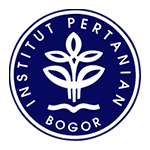The agriculture, forestry and rural development of Laos will strive to expand at a sustainable level of 2.8 percent in 2018, accounting for 15.73 percent of GDP, state-run daily Vientiane Times reported on Wednesday.
To attain this target, the Lao government, especially the Ministry of Agriculture and Forestry, will continue to implement projects of national priority such as commercial production and food security.
Agriculture and forestry experts from around the country are currently meeting with government officials, provincial deputy governors and development partners here to review achievements in the sector, and to discuss plans for development in 2018.
To fulfill the ministry's four major plans concerning food security, commercial agriculture promotion, forestry and forest resource management, and rural development for poverty reduction, more cooperation and assistance is needed to implement essential measures and policies, Minister of Agriculture and Forestry Lien Thikeo told the meeting.
"This especially applies to trade promotion policy, electricity generation policy and loan interest rates," the daily quoted him as saying at the meeting.
With regard to food security, the Lao government has allocated rice, vegetables, and oranges, along with pork, fish, and beef, as the main products to be prioritized.
The ministry is targeting a yield of 4.2 million tons of rice, along with 199,800 tons of meat, 179,000 tons of fish, and 34,450 tons of eggs this year.
Other commercial crops for domestic sale and export include 137,500 tons of coffee, 1.2 million tons of sweetcorn and 2.4 million tons of cassava.
The agriculture, forestry and rural development sector expanded slowly in 2017 due to extreme weather, damage to irrigation systems and locust outbreaks, the daily quoted Deputy Minister of Agriculture and Forestry Phouangparisak Pravongviengkham as saying.
"Last year, about 30,000 hectares or 130,000 tons of rice were destroyed by flooding and locust outbreaks in 330 villages across 24 districts of five northern provinces," he said.
But production methods are changing from traditional techniques to new ways of farming and farmers are growing a wider variety of crops that are clean and sustainable, Phouangparisak said.
Using machinery and new technology in rice growing has reduced the cost of production from 2,300-2,500 kip (0.28 to 0.3 U.S. dollar) per kg for paddy rice to 1,400-1,900 kip (0.17 to 0.23 U.S. dollar) per kg, according to a demonstration project.
Although Laos was unable to reach its production targets last year, there was still surplus rice for consumption and export, and the government will promote other crops to ensure food security and more income for farmers, Phouangparisak added.









